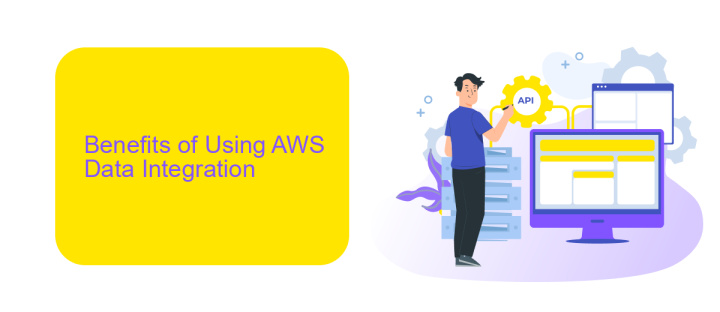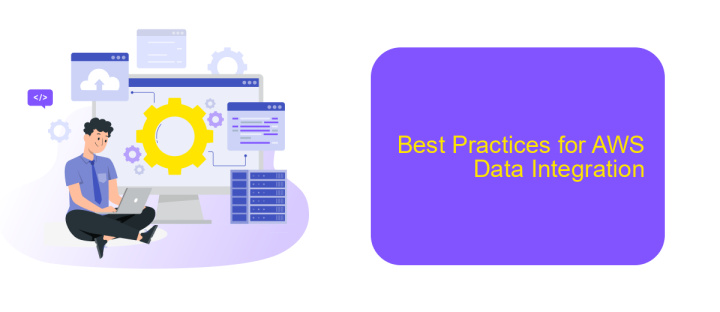AWS Data Integration
In today's data-driven world, seamless data integration is crucial for businesses to harness the full potential of their information assets. AWS Data Integration offers a comprehensive suite of tools and services designed to simplify and streamline the process of integrating diverse data sources. This article explores the key features, benefits, and best practices for leveraging AWS Data Integration to drive business success.
Introduction to AWS Data Integration
Amazon Web Services (AWS) offers a robust suite of tools and services designed to facilitate seamless data integration across diverse systems and applications. AWS Data Integration enables organizations to efficiently move, transform, and analyze data, thereby unlocking valuable insights and driving informed decision-making.
- Amazon S3: Scalable storage for data lakes and analytics.
- AWS Glue: Managed ETL service for data preparation and transformation.
- Amazon Redshift: Data warehousing for large-scale analytics.
- AWS Data Pipeline: Orchestration service for data workflows.
- Amazon Kinesis: Real-time data streaming and analytics.
Integrating various data sources can be complex, but services like ApiX-Drive simplify the process by providing pre-built connectors and automated workflows. This allows businesses to synchronize data between AWS and other platforms effortlessly, ensuring data consistency and reliability. By leveraging AWS and tools like ApiX-Drive, organizations can create a cohesive data ecosystem that supports their analytical and operational needs.
Benefits of Using AWS Data Integration

Integrating data with AWS offers numerous benefits, primarily enhancing operational efficiency and scalability. AWS provides a comprehensive suite of tools that facilitate seamless data integration, enabling businesses to consolidate data from various sources into a unified platform. This not only streamlines data management but also significantly reduces the time and resources required for data processing and analysis. With services like AWS Glue, businesses can automate the extract, transform, and load (ETL) processes, ensuring that data is consistently up-to-date and readily available for decision-making.
Another significant advantage of using AWS for data integration is its robust security and compliance features. AWS adheres to stringent security standards, ensuring that data is protected against unauthorized access and breaches. Additionally, the flexibility of AWS allows businesses to scale their data integration efforts in response to changing demands, without incurring substantial costs. For instance, leveraging services like ApiX-Drive can further simplify the integration process by providing user-friendly tools to connect various applications and automate workflows, ultimately driving productivity and innovation.
Overview of AWS Data Integration Services

AWS offers a variety of data integration services designed to streamline the process of managing and moving data across different systems. These services are essential for businesses looking to harness the full potential of their data for analytics, machine learning, and other applications.
- AWS Glue: A fully managed ETL (extract, transform, load) service that makes it easy to prepare and load data for analytics.
- Amazon Kinesis: Allows real-time processing of streaming data, enabling timely insights and actions.
- AWS Data Pipeline: A web service that helps you reliably process and move data between different AWS compute and storage services.
- Amazon AppFlow: Facilitates the secure transfer of data between AWS services and SaaS applications like Salesforce and ServiceNow.
For businesses seeking additional integration capabilities, ApiX-Drive is a valuable tool. It simplifies the process of connecting various applications and automating data workflows, complementing AWS services by providing a user-friendly interface and extensive integration options. By leveraging these services, organizations can ensure their data is efficiently managed and readily available for decision-making processes.
Best Practices for AWS Data Integration

Effective data integration with AWS requires a strategic approach to ensure seamless data flow and optimal performance. Start by thoroughly understanding your data sources and the specific requirements of your integration process. This will help you choose the right tools and services for your needs.
Security is paramount when integrating data across different platforms. Implement robust encryption methods and access controls to protect sensitive information. Regularly audit your data pipelines to identify and address any vulnerabilities.
- Utilize AWS Glue for efficient data cataloging and ETL processes.
- Leverage Amazon Redshift for scalable data warehousing solutions.
- Consider using ApiX-Drive to automate and streamline data integration tasks.
- Monitor your data flows with Amazon CloudWatch to ensure reliability and performance.
Finally, continuously optimize your data integration workflows by analyzing performance metrics and making necessary adjustments. This proactive approach will help you maintain a robust and efficient data integration environment, ensuring that your business can leverage data effectively.
Case Studies and Examples of AWS Data Integration
One notable case study of AWS Data Integration involves a retail company that leveraged AWS Glue and Amazon Redshift to streamline their data processing. By using AWS Glue, the company automated the ETL (Extract, Transform, Load) processes, significantly reducing manual labor and errors. Amazon Redshift then provided a scalable data warehouse solution, enabling faster query performance and real-time analytics. This integration allowed the company to make data-driven decisions more efficiently, ultimately improving their operational effectiveness and customer satisfaction.
Another example is a healthcare provider that integrated various data sources using AWS Data Integration services. By utilizing AWS Lambda and Amazon S3, they were able to create a serverless architecture that securely managed patient data. Additionally, ApiX-Drive was employed to automate data workflows between disparate systems, ensuring seamless data synchronization. This comprehensive approach not only enhanced data reliability but also ensured compliance with healthcare regulations, thereby improving patient care and operational efficiency.
FAQ
What is AWS Data Integration?
Why is data integration important in AWS?
What are some common challenges in AWS Data Integration?
How can I automate data integration processes in AWS?
What are the benefits of using automated data integration tools?
Routine tasks take a lot of time from employees? Do they burn out, do not have enough working day for the main duties and important things? Do you understand that the only way out of this situation in modern realities is automation? Try Apix-Drive for free and make sure that the online connector in 5 minutes of setting up integration will remove a significant part of the routine from your life and free up time for you and your employees.

